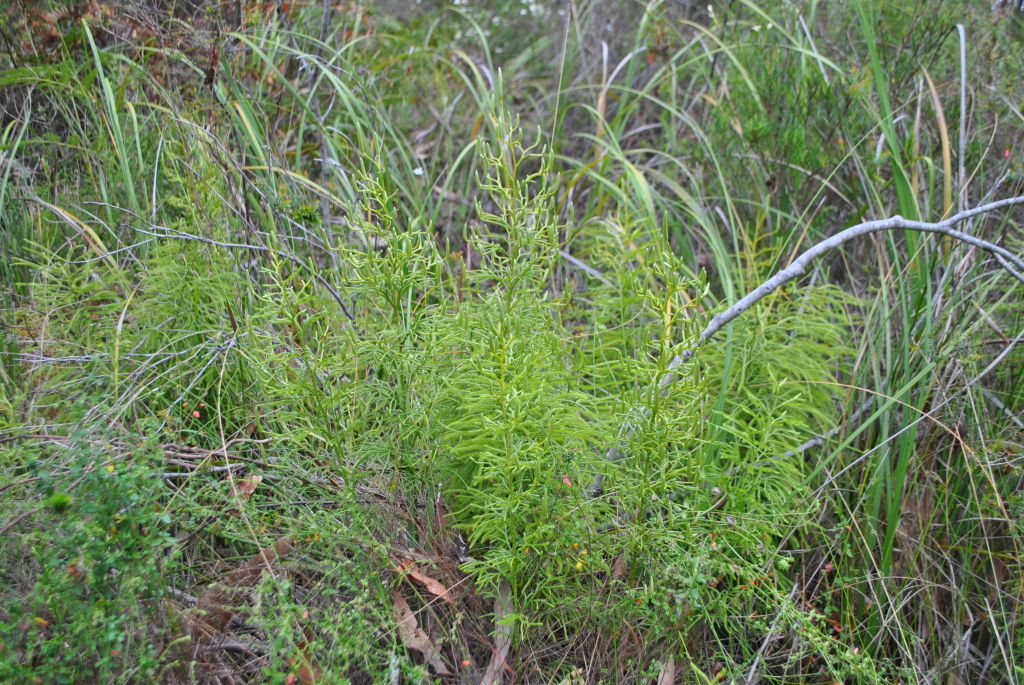Lycopodium deuterodensum
Herter Bushy ClubmossRhizome creeping, much-branched and deeply buried. Aerial stems erect, rigid, long-stemmed, repeatedly branched to produce bushy plant, 25–100 cm tall. Leaves spirally arranged, overlapping in all but main stem and coarser branches, ovate 1–2.5 mm long, stem-clasping, with membranous margins, or, linear-lanceolate and spreading (incurved at apex), 2–4 mm long. Strobili numerous, erect and terminal on minor branches, 10–20 mm long. Sporophylls overlapping, spreading when mature, close-set, broadly ovate; margins membranous, pale and jagged; apex acute.
Wim, VVP, GipP, OtP, WaP, CVU, GGr, EGL, EGU, WPro, HSF, HNF, OtR, Strz, VAlp. Also SA (one record), Qld, NSW, Tas. (including Bass Strait islands), Norfolk Is. New Zealand, New Caledonia. In open-forest, scrub or heathland, on peaty soil or disturbed sites.
Plants growing in exposed sites tend to be short and bushy, while those in damp, sheltered sites are somewhat spindly. Plants possessing either of the two leaf forms described above often appear strikingly different but some plants have leaves of both sorts.
Entwisle, T.J. (1994). Ferns and allied plants (Psilophyta, Lycopodiophyta, Polypodiophyta). In: Walsh, N.G.; Entwisle, T.J., Flora of Victoria Vol. 2, Ferns and Allied Plants, Conifers and Monocotyledons, pp. 13–111. Inkata Press, Melbourne.
 Spinning
Spinning



